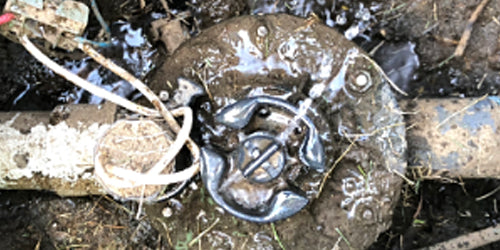Sometimes it is a bit challenging to locate sprinkler valves. Although an irrigation system can operate smoothly for many years, sprinkler systems will need regular maintenance, and often times the valve boxes are hidden and tough to find. Locating a malfunctioning sprinkler valve can be difficult when a valve replacement or tune-up is required. The sprinkler valve boxes can be covered by mulch, grass may be overgrown, and the valves can even be buried directly in the dirt without a valve box.
What Is a Sprinkler Valve?

Automatic irrigation valves are usually a globe or angle (straight or bent) and use a diaphragm and an electric solenoid to switch the valve open and close. Sprinkler valves are commonly plastic for residential and most commercial applications then metal for heavy-duty sites such as golf courses and municipal pumping stations. Valves can be grouped together in manifolds, or installed individually - and valves should always be buried inside a plastic irrigation valve box. Never bury a valve directly in the dirt.
It is recommended to use a minimum valve box size of a 10-inch round for single valves, Econo valve boxes for valves are not advisable because these are too small and making repairs will be difficult. Sprinkler valves are operated electronically using low voltage 24v power generally of 18 gauge wire for residential, and 14 gauge wire for commercial. Valves require a separate 24v power wire for each valve and are connected together with a white "common" wire, linked between each valve.
The process to find sprinkler valves can be complicated; however, these helpful tips can guide you through the process of locating the hidden valves in your property.
1) Start in the Most Likely Places
- Probe the soil. Determine the irrigation valve area, and sift through the soil in that specific section of your property. This process is not recommended except if you are completely sure that a valve box covers the lawn irrigation valves. Otherwise, probing the soil could cause damage to the solenoid, the valve wires or the irrigation system pipes.
- Look for valves box covers. If valve boxes were set over the valves when the system was installed, they are most probably just under the surface.
2) Ask the Install Company for Blueprints
- Check with city permitting office. Most of the time, the irrigation system permit application involves an irrigation blueprint, which should indicate the location of the irrigation valve.
3) Click Test
- Turn on the zone in question. Determine which sprinklers are the earliest to pressurize. These are the sprinklers nearest to the irrigation system valve.
- Listen for clicking noise at the solenoid. Turn on the valve and try to listen to the buzzing solenoid or water whizzing through the valve. Try to utilize a mechanic's stethoscope on the ground to monitor it.
4) Wire Locator
- Rent a valve-locating device. These devices detect lost valves by tracking the wires from the controller to the lawn irrigation system valve site. A valve-locating device contains a transmitter, a receiver, two lead wires, and a grounding stake. It transmits a beeping signal along the wire to find irrigation valves. Utilizing a valve locator is a definite means to discover lost valves without damaging the lawn.
- Trace the wire path to find the valve solenoid. Use a wire locator which is also known as a wire tracer device. In some tool rental places, especially in locations that provide to professional contractors, have wire tracers they rent. This device is used to follow the path of the wires to the valve, starting at the controller/timer.
5) If All Else Fails, Call the Professional Sprinkler Company
- If these tips don’t do the trick, consider seeking professional help.

